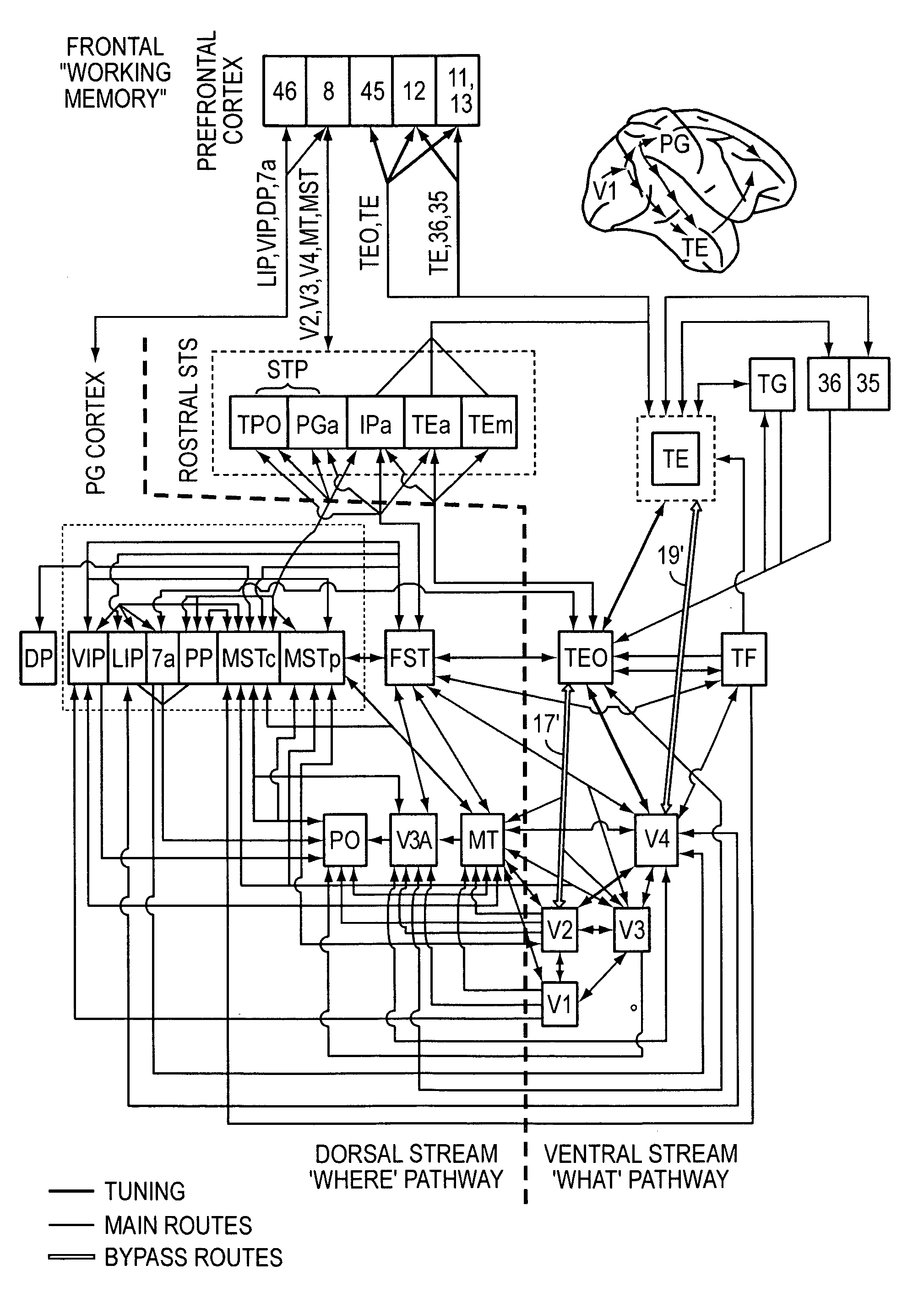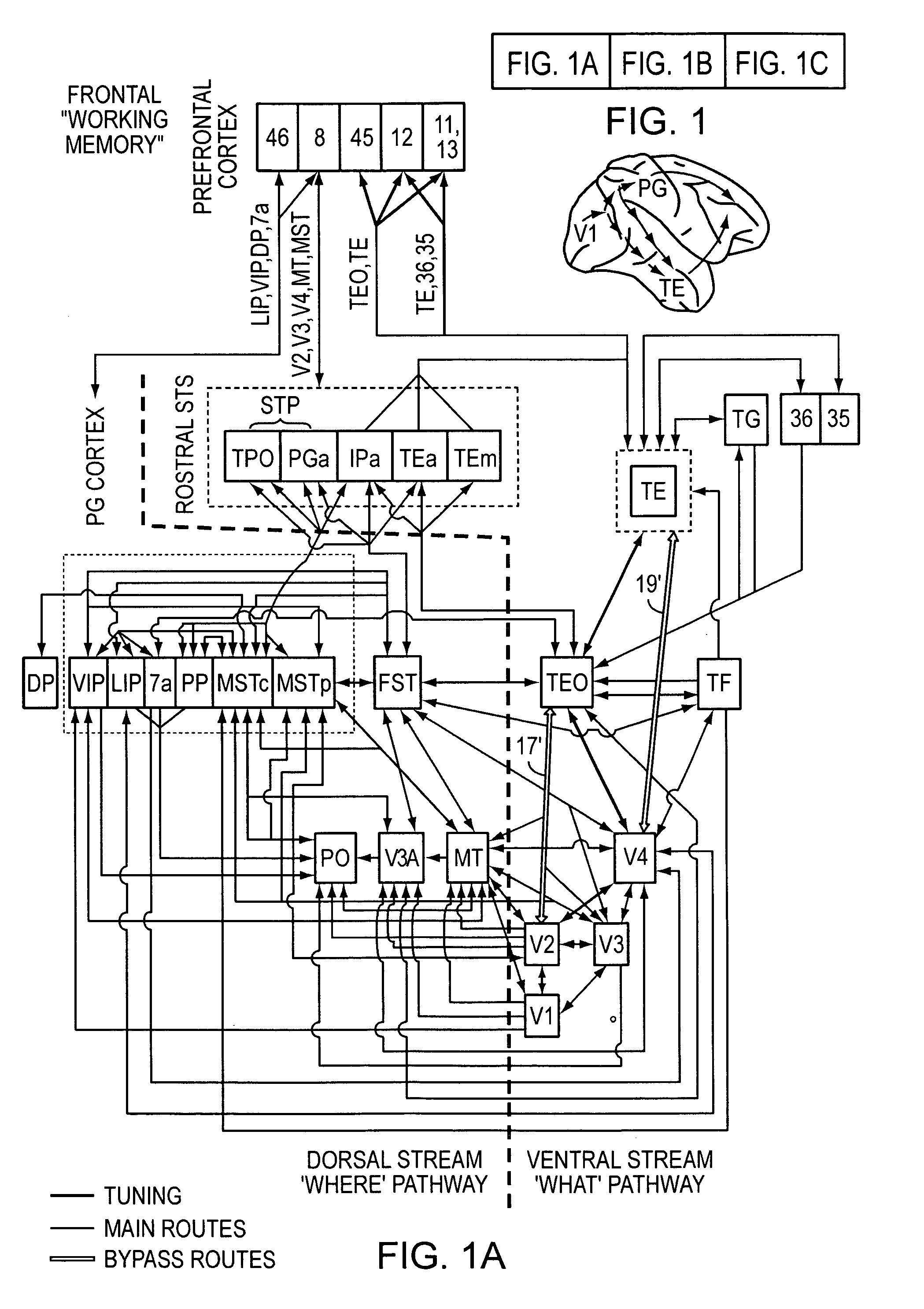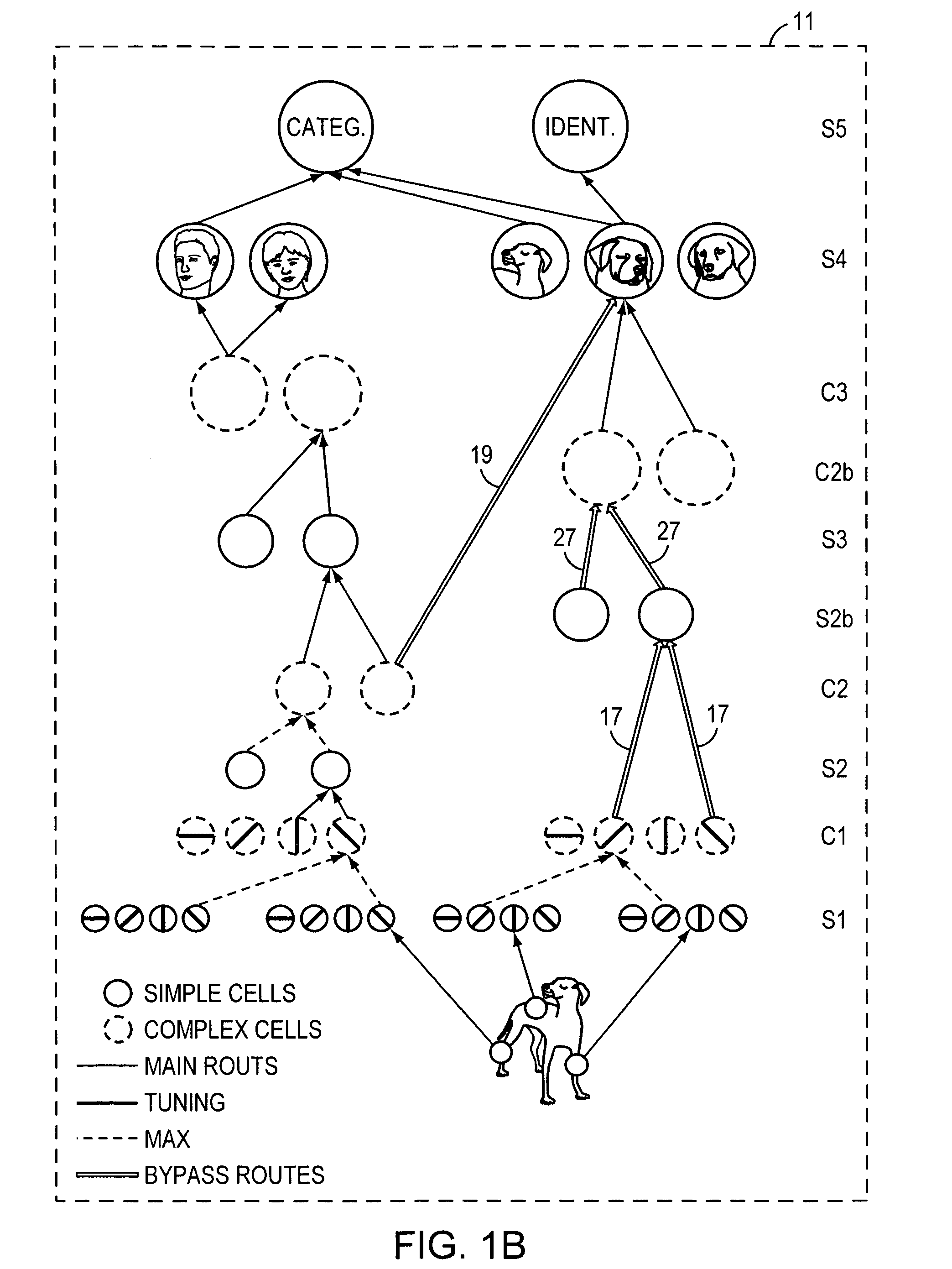High-performance vision system exploiting key features of visual cortex
a vision system and visual cortex technology, applied in the field of high-performance vision systems, can solve the problems of lack of respect, inability to accurately capture variations in object appearance, and the inability of sift-based features to perform well on a generic object recognition task, so as to achieve small distortion of input and better trade-off between invariance
- Summary
- Abstract
- Description
- Claims
- Application Information
AI Technical Summary
Benefits of technology
Problems solved by technology
Method used
Image
Examples
Embodiment Construction
[0018]A description of preferred embodiments of the invention follows.
[0019]Because humans and primates outperform the best machine vision systems by almost any measure, building a system that emulates object recognition in cortex has always been an attractive idea. However, for the most part, the use of visual neuroscience in computer vision has been limited to justification of Gabor filters. No real attention has been given to biologically plausible features of higher complexity. While mainstream computer vision has always been inspired and challenged by human vision, it seems to never have advanced past the first stage of processing in the simple cells of primary visual cortex V1. Models of biological vision include:
[0020]Fukushima, K., “Neocognition: A self organizing neural network for a mechanism of pattern recognition unaffected by shift in position,”Biol. Cybern., 36:193-201, 1980;
[0021]Mel, B. W., “SEEMORE: Combining color, shape and texture histogramming in a neurally-insp...
PUM
 Login to View More
Login to View More Abstract
Description
Claims
Application Information
 Login to View More
Login to View More - R&D
- Intellectual Property
- Life Sciences
- Materials
- Tech Scout
- Unparalleled Data Quality
- Higher Quality Content
- 60% Fewer Hallucinations
Browse by: Latest US Patents, China's latest patents, Technical Efficacy Thesaurus, Application Domain, Technology Topic, Popular Technical Reports.
© 2025 PatSnap. All rights reserved.Legal|Privacy policy|Modern Slavery Act Transparency Statement|Sitemap|About US| Contact US: help@patsnap.com



